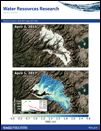Including regional knowledge improves baseflow signature predictions in large sample hydrology
A catchment’s hydrological response is controlled by climatic forcing and by the landscape through which water moves. Yet when we compare large samples of catchments, we often find climate to be the only good predictor of the hydrological response and a lot of variability is left unexplained. This contradicts extensive evidence from field and regional studies which shows the importance of catchment form (e.g. geology) on catchment hydrological processes, particularly on baseflow processes. We hypothesize that this is due to limitations in (a) the catchment attributes we use to inform our analyses and (b) the hydrological signatures we use to describe the hydrological response. To test these hypotheses we use a large sample of catchment data across the contiguous United States. By reviewing literature from several U.S. regions, we show that region‐specific knowledge is underutilized in large sample studies. To organize the findings from these regions we propose and apply a framework based on standardized perceptual models. Informed by these perceptual models, we use both available and newly calculated catchment attributes to show that baseflow signature predictions can be improved regionally. Multiple baseflow signatures are needed to better distinguish between different baseflow sources, such as the subsurface, surface water bodies, and snow. We conclude with pointing at potential future directions and argue that we should aim at a more systematic and hydrologically motivated selection of catchment attributes and hydrological signatures.

